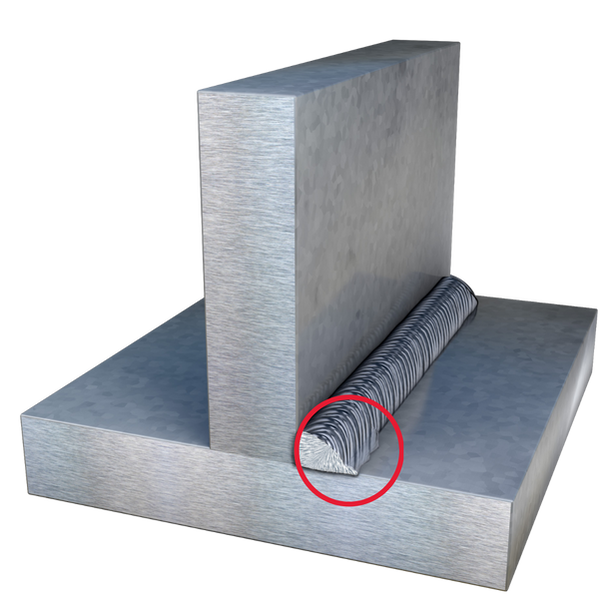Important Tips for Welders: Stopping Undercut Welding and Ensuring Stronger Weld Joints
In the realm of welding, achieving long lasting and strong weld joints is the foundation of creating top quality work. One usual difficulty that welders typically experience is undercut welding, which can compromise the honesty of the weld joint.

Understanding Undercut Welding
Undercut welding is an usual welding defect that takes place when the weld metal falls short to effectively fill the groove and causes a groove-like depression along the weld bead. This flaw compromises the weld joint, making it prone to cracking and failure under stress and anxiety. Undercutting can be triggered by various aspects, including excessive welding present, high welding rate, improper electrode angle, inaccurate electrode dimension, and inadequate welding method.
Among the major reasons for undercut welding is a discrepancy in between the welding existing and the welding speed. If the welding current is too expensive or the welding rate is also fast, the weld metal may not appropriately fill the groove, causing undercutting. Furthermore, utilizing an electrode that is also huge can result in a similar outcome, as the excess steel can not effectively flow into the groove.
To stop undercut welding, welders must guarantee they are making use of the appropriate welding criteria, preserve an ideal electrode angle, choose the ideal electrode dimension, and technique correct welding techniques. By addressing these elements, welders can reduce the danger of undercutting and develop stronger, more dependable weld joints.
Appropriate Welding Technique
Efficient welding technique plays an important role in guaranteeing the quality and integrity of weld joints. Proper welding strategy entails a mix of precision, skill, and adherence to ideal techniques. One essential element of proper welding technique is keeping the correct angle and distance in between the welding weapon and the workpiece. Welders must additionally pay attention to the traveling speed and heat input to prevent concerns like undercutting, porosity, or incomplete blend.
Furthermore, a consistent and constant hand activity is vital for creating strong and durable weld joints. Welders must aim for smooth, uniform motions to ensure even circulation of the weld material. Correct manipulation of the welding weapon and filler material is additionally essential to attaining optimal infiltration and blend.
Additionally, controlling the warmth input and selecting the proper welding criteria based upon the material being welded are essential variables in accomplishing high-quality welds - Preventing weld undercut. Welders must adhere to the recommended settings supplied by welding treatment requirements and adjust them as needed based upon the details requirements of the job. By understanding correct welding methods, welders can significantly improve the stamina and integrity of their weld joints
Picking the Right Electrode
When considering the relevance of choosing the right electrode in welding applications,Maintaining the appropriate angle and distance between the welding gun and the workpiece is essential. The selection of electrode plays a critical duty in determining the quality and strength of the weld joint. Electrodes come in various types, each created for certain functions and materials.
First of all, selecting the suitable electrode diameter is vital. Thinner electrodes appropriate for welding thin materials, while thicker electrodes are much better for thicker products and greater warm applications. Matching the electrode diameter to the density of the workpiece helps achieve a well balanced weld.
Second of all, comprehending the material make-up of the electrode is vital. Various electrodes are made for welding details products like steel, stainless steel, aluminum, or cast iron. Utilizing the right electrode product makes certain good combination and lessens the threat of flaws in the weld.
Finally, thinking about the welding position and strategy is critical when selecting the electrode type. For example, certain electrodes are much better fit for vertical or overhanging welding placements, while others work well for flat or straight settings. Choosing the right electrode based upon the welding technique enhances the overall weld top quality and stability.
Preparing the Base Steel
To guarantee a successful welding procedure, what initial steps should be taken when preparing the base metal for welding? In addition, any existing weld material or residue from previous welding need to be eliminated to make certain a tidy surface for the new weld.

Carrying Out Post-Weld Inspections

After performing these analyses, welders need to contrast the results against industry standards and click task needs to make sure that the weld joint satisfies all required criteria. Any kind of insufficiencies or deviations uncovered throughout the post-weld assessment needs to be immediately attended to through appropriate restorative procedures to guarantee the weld's honesty. By vigilantly performing post-weld inspections and immediately dealing with any problems, welders can support the quality and integrity of their job, ultimately adding to the security and longevity of the welded structures.
Final Thought

To conclude, protecting against undercut welding and guaranteeing more powerful weld joints need a mix of appropriate welding strategy, selecting the appropriate electrode, preparing the base metal appropriately, and conducting post-weld examinations. By comprehending the reasons of undercut welding and executing the essential precautions, welders can generate top quality weld joints that fulfill industry requirements and make sure the structural honesty of the bonded components.
Undercut welding is a typical welding issue that occurs when the weld steel falls short to properly load the groove and results in a groove-like anxiety along the weld grain (Preventing weld undercut). Damaging can be caused by different aspects, consisting of excessive welding current, high welding rate, inappropriate electrode angle, wrong electrode size, and bad welding method
One of the major factors for undercut welding is an imbalance between the welding present and additional resources the welding speed. If the welding current is as well high or the welding rate is as well quickly, the weld steel may not sufficiently fill up the groove, leading to damaging.Keeping the proper angle and range in between the welding gun and the work surface is fundamental when considering the significance of selecting the ideal electrode in welding applications.
Comments on “Your Full Manual to Preventing Weld Undercut Like a Pro”